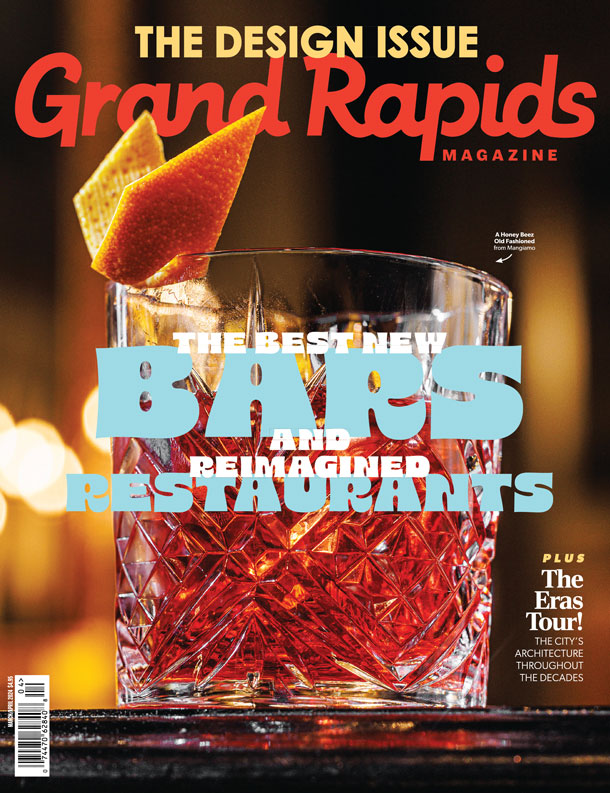From the Grand Rapids Magazine May 2018 issue. Available on newsstands now or via subscription.
Stories of culture, religion and social criticism unfold through the images in Kruizenga Art Museum’s growing print collection, including recent acquisitions by famous artists that span 500 years.
The museum’s latest exhibit, “Culture, Commerce and Criticism,” offers a snippet of the larger collection and highlights 50 prints from the early 1500s to the early 2000s that explore the various ways prints have shaped Western culture.
Printmaking has served a variety of purposes since emerging as a major art form in the 15th century by offering commentary on current events, helping artists make a living, and disseminating knowledge through early books and Bibles.
The exhibition includes such notable names as Albrecht Durer, Rembrandt van Rijn, James McNeill Whistler, Salvador Dali, William Hogarth and Francisco Goya, and gives space to female artists, including Kathe Kollwitz, Helen Frankenthaler, Barbara Kruger and Kara Walker.
Some of the prints were donated to the college over the past 50 years, but the majority of the prints were purchased strategically in the last few years to create a coherent body of work, according to Charles Mason, director and Margaret Feldmann Kruizenga curator of the museum.

“This is an opportunity to show the Hope College community and other West Michigan communities what we have in the way of European and American prints,” Mason said.
The collection’s goal is to connect the prints to art making and history but also to demonstrate how they relate to a variety of academic disciplines, such as anthropology, communication, religion and political science.
Mason wanted the exhibition to tell a story, one that captures the cultural, commercial and critical aspects of the art form, which emerged along with papermaking, book printing and metal engraving. The works, arranged chronologically, include examples of the three main printing techniques: relief, such as woodcuts; intaglio engravings and etchings; and planographic styles, such as lithography and screen printing.
Prints are easy to duplicate and disseminate, making them easier and cheaper for artists to transport and sell and buyers to afford. It’s always been a very democratic art form that reached society’s middle class, and the exhibit expresses some of those interests over the centuries, Mason said.
“They became a way to comment on issues of war or class inequalities and gender issues,” he said. “Over time, the issues have changed, but going back at least to the 18th century, artists have been using prints as a platform for making social commentary.”

Hope College professor Anne Heath, along with the students in her Art 361 seminar, collaborated and helped develop the content and presentation of the exhibit. They held class in the museum last fall, and the first-time collaboration gave students the opportunity to do background research and write the labels and information panels.
“You get these different perspectives and opinions about the artwork,” Mason said. “I think it was pretty successful, too, and the students did a great job. Their labels are really interesting to read.”
“Culture, Commerce and Criticism” will be on display through May 19 at Hope College’s Kruizenga Art Museum, located at 271 Columbia Ave. in Holland.
*Photos courtesy of Hope College’s Kruizenga Art Museum








Facebook Comments